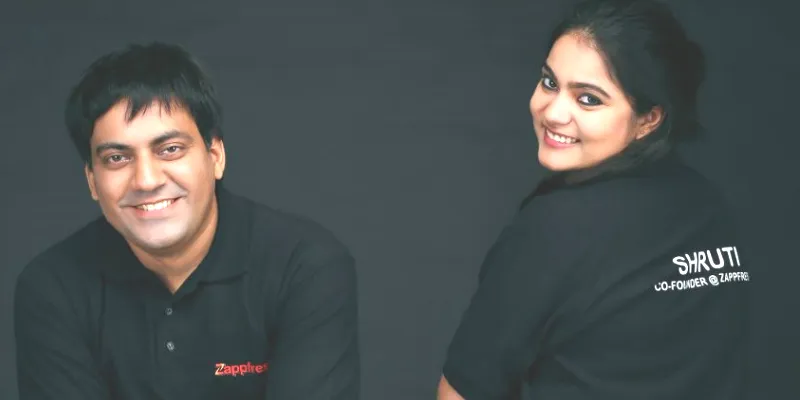ZappFresh and Licious are working on the meat of the matter - finding profitability
Meat is the only category in India’s $300 billion grocery market that is not organised. With demand rising, a few startups are trying to change the way urban India buys meat.
On the face of it, India seems to be a vegetarian country. Data suggests otherwise. The Sample Registration System (SRS) baseline survey 2014 - released by the Registrar General of India - revealed that “71 percent of Indians over the age of 15 are non-vegetarian”. India consumes meat worth around $30 billion every year and the demand is only expected to grow faster driven by economic growth, rising per capita income, urban trends, and a rise in the awareness of the nutrition provided by meat and related products.
Reports also suggest 90 percent of the demand for meat in India is handled by the unorganised market. Meat is the only category in the $300 billion grocery market that does not function in an organised manner. While scientific breeding may have cut down costs drastically, the rise in factory farming, overuse of antibiotics, and poor production conditions have led to concerns about the quality of the chicken and mutton we’re putting on our plate.
A few startups are now aiming to change that. Keen to provide meat that’s healthy and traceable (traced to its farm and the way the animal has been treated), they’re working to ensure consumers get the best product at competitive prices.

Getting started
A chance meeting with Albinder Dhindsa, the Founder of Grofers, led Deepanshu Manchanda to think about why there weren’t many players looking at meat quality and sourcing. Not long after, in 2015, he and Shruti Gochhwal, colleagues at Mobikwik, decided to quit and launch ZappFresh. Deepanshu says,
“We started researching the subject, and soon realised that the gap in the fresh, chilled meat market was huge. The problem lay across the supply chain - from sourcing and quality to serviceability and distribution.”
After various rounds of meetings with customers, shopkeepers, traders, and wholesalers in the local markets of Gurgaon, Deepanshu and Shruti decided to launch ZappFresh.
ZappFresh now serves the five cities of Delhi, Gurgaon, Noida, Faridabad, and Ghaziabad in the Delhi-NCR region, and had earlier raised a seed round of $300,000. This year, it raised $3 million from SIDBI Venture Capital and Amit Burman.
In the same year, Vivek Gupta and Abhay Hanjura quit their corporate jobs in technology and insurance, and started Licious to resolve the meat conundrum. Vivek, Co-founder of Licious, says,
“We wanted to put life back into the dead chicken. This was the promise we wanted to bring to the market. We wanted consumers to enjoy meat that was clean, a far cry from the unhygienic conditions in butcher markets.”
Licious, which has raised $14 million from Mayfield Capital and 3One4 Capital, services five cities.

Cold supply chain
ZappFresh has created a supply chain by working with farmers and slaughter houses (it does not disclose the number) to deliver chemical-free fresh meat at the consumer’s doorstep without breaking the cold chain. “We aim to provide the freshest stock in the fastest way,” Deepanshu says.
The company, while refusing to divulge details about its network, says its omni-channel model works with various partners to ensure transparency and traceability, along with the responsibility of handling and delivering an excellent meat product to consumers. ZappFresh did not want to disclose any numbers and has refrained from answering their daily numbers.
Licious, meanwhile, has forged partnerships with 180 vendors, has 27 delivery centres, and an employee strength of 600. It has over 300,000 customers with a minimum of 5,000 orders per day across five cities.
Both companies are fighting the unorganised market, dominated by local butchers who comprise 95 percent of the industry. They are banking on creating a cold chain to help deliver meat that has been stored at the right temperature.
Chetan Anand, Director at PWC, says: “This is where the costs are, when you are creating a new standard in the industry.”
India’s meat market is estimated at $30 billion now. Growing at a CAGR of 20 percent, it is expected reach $65 billion by 2022. This, despite the fact that the country has the lowest per capita meat consumption in the world. According to the World Bank, the US consumes, on an average, 62 kg of chicken per person per year; in India, this figure is at 17 kg per person per year. When it comes to red meat, the US consumes 24 kg per person per year, while in in India, red meat consumption is less than 10 kg per person per year.
The rising demand, however, is more than enough reason for ZappFresh and Licious to eye a share of the meaty pie.
Figuring things out
ZappFresh is yet to report its revenues for FY2018. Its revenue for 2017 was Rs 8.5 crore; in 2016, this figure was at Rs 84 lakh. This 10x growth has been attributed to the company’s partnerships with butchers and meat suppliers. The company expects a 3x growth in revenue now that it has raised $4 million, and plans to expand to new cities in the coming year. ZappFresh is not yet profitable and like any company that is booking a supply chain, will not be until it stabilises its customer acquisition.
Licious, on the other hand, reported Rs 12.3 crore in revenue in FY2017 from Rs 1.4 crore in FY2016. The losses for FY2017 were Rs 18.4 crore. It set up two processing plants – one in Bengaluru and the other in Gurgaon - and had to invest in delivery containers that could manage to transport meat at 4 degrees centigrade. The company also launched a pre-marinated brand and its own private label, which is available on ecommerce platforms.
The gross salaries of Shruti and Deepanshu are Rs 8.60 lakh each, a figure that may increase with the new fund raise of $4 million. Licious founders take a gross salary of Rs 35 lakh each.
Changing the mindset
Both these companies believe they will grow going forward. Working on a mindset change in consumption in the industry, they will remain loss-making for a few more years as they expand to new cities and spend money on marketing.
Venk Krishnan, Founder of NuVentures, says: “The B2C business in India is still strong. We expect a lot of emerging new brands and businesses in the coming years to focus on verticals rather than horizontals.”
Deepanshu says technology is at the heart of Zappfresh, which makes it possible to deliver fresh to consumers. “We recently launched the institutional vertical with a few blue-chip institutional clients such as Lite Bite Foods and Taj. The entire business works through technology, right from sourcing, temperature-controlled supply chain, buying experience through web/app/calls, and last-mile delivery. We make money on each order.”
The founders of Licious say user experience and satisfaction is more important than anything else.
ZappFresh and Licious, like other vertical-specific players (Urban Ladder in furniture or Paper Boat in juices), can be popular in the top 20 urban centres of India and continue to bleed. They are yet to scale up to many cities. The question is whether, with the current unit economics, they are be able to raise more money and continue to create a market.
But with India’s meat industry growing, these startups are showing the way on how to organise the market.







